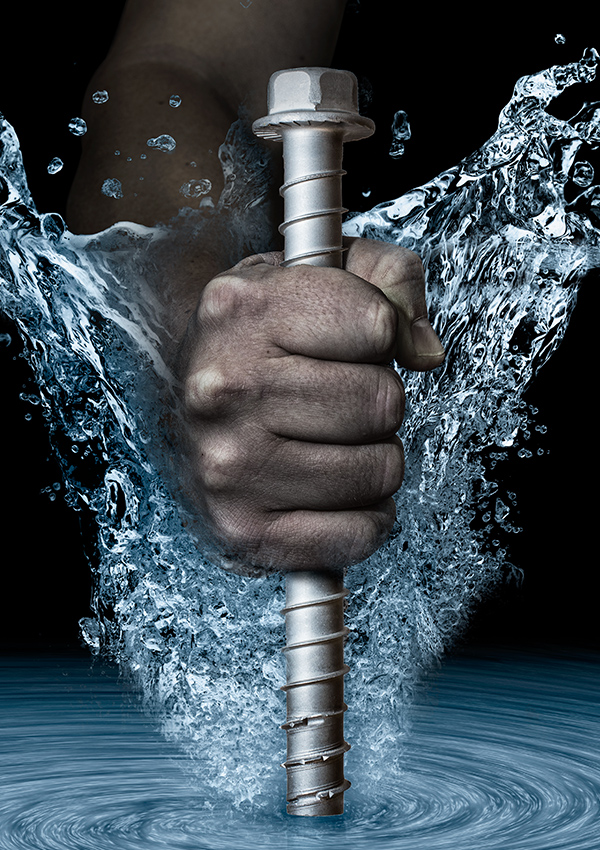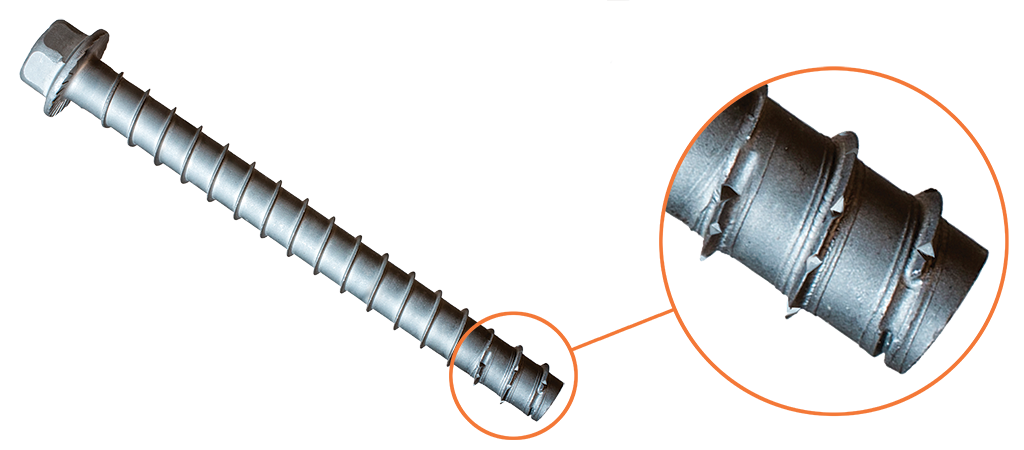I was driving under a concrete bridge one nice clear day in Chicago, and I happened to look up to see rusted rebar exposed below a concrete bridge. My beautiful wife, who is not a structural engineer, turned to me and asked, “What happened to that bridge?” I explained that there are many reasons why spalling occurs below a bridge. One common reason is the expansion of steel when it rusts or corrodes.
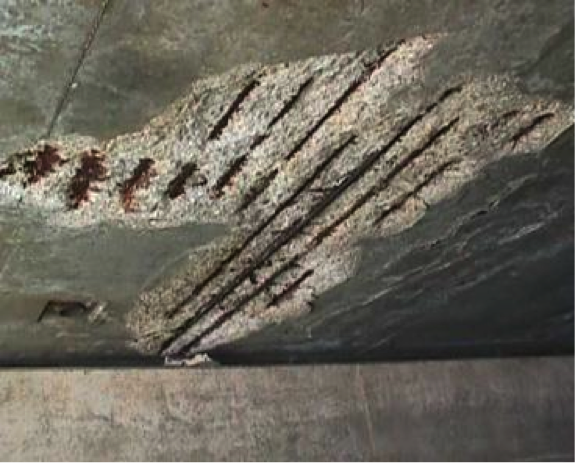
This week’s blog will briefly explain the corrosion process and why concrete spalls when the embedded metals corrode. Corrosion may be defined as the degradation of a material as a reaction to its environment.1. As described in our previous SE Blog post, “Corrosion: The Issues, Code Requirements, Research and Solutions” dated January 3, 2013, corrosion of metallic surfaces is an electrochemical process. Because of moisture evaporation, concrete is a porous material. Water and oxygen molecules enter the pores of the concrete, and an electrochemical process occurs with the carbon-steel bar. The iron in the steel is oxidized, which then produces rust. A buildup of rust products at the surface of the carbon-steel bar exerts an expansive force on the concrete. Based on the amount of oxidation, the rust products of steel can occupy more than six times the volume of the original steel.2 Over time, further rust occurs and surface cracks will form. Eventually spalling will occur, exposing the rusted carbon steel bar. (See figure 1.)
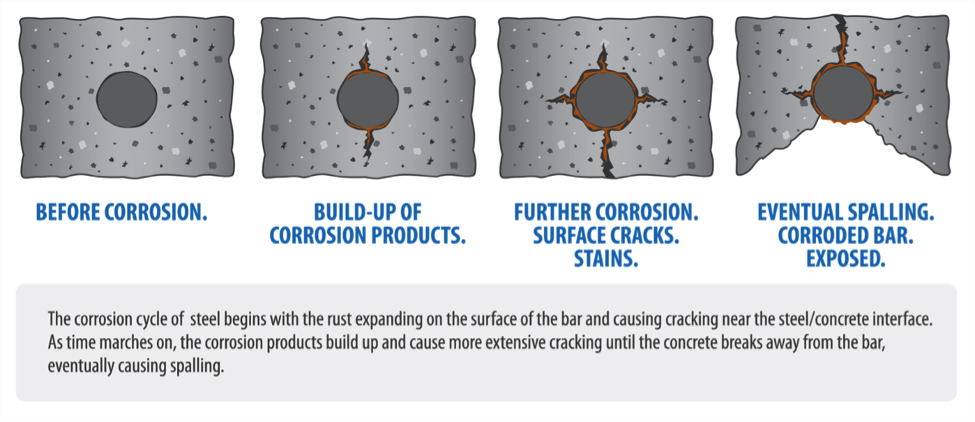
Just as with reinforcing bars below a concrete bridge, cracking and spalling can occur when a carbon-steel anchor is used adjacent to a concrete edge. Simpson Strong-Tie® has many anchorage products that can be used in these conditions to prevent cracking. One specific product is the new stainless-steel Titen HD® screw anchor. This new innovative screw anchor is made up of Type 316 stainless steel. As seen in Figure 3, Type 316 stainless steel has a high level of resistance. This makes the stainless-steel Titen HD an excellent choice when it comes to an anchorage solution in corrosive environments. These environments include wastewater treatment plants, exterior handrails, exterior ledger attachments, stadium seating, central utility plants, and kitchens just to name a few.
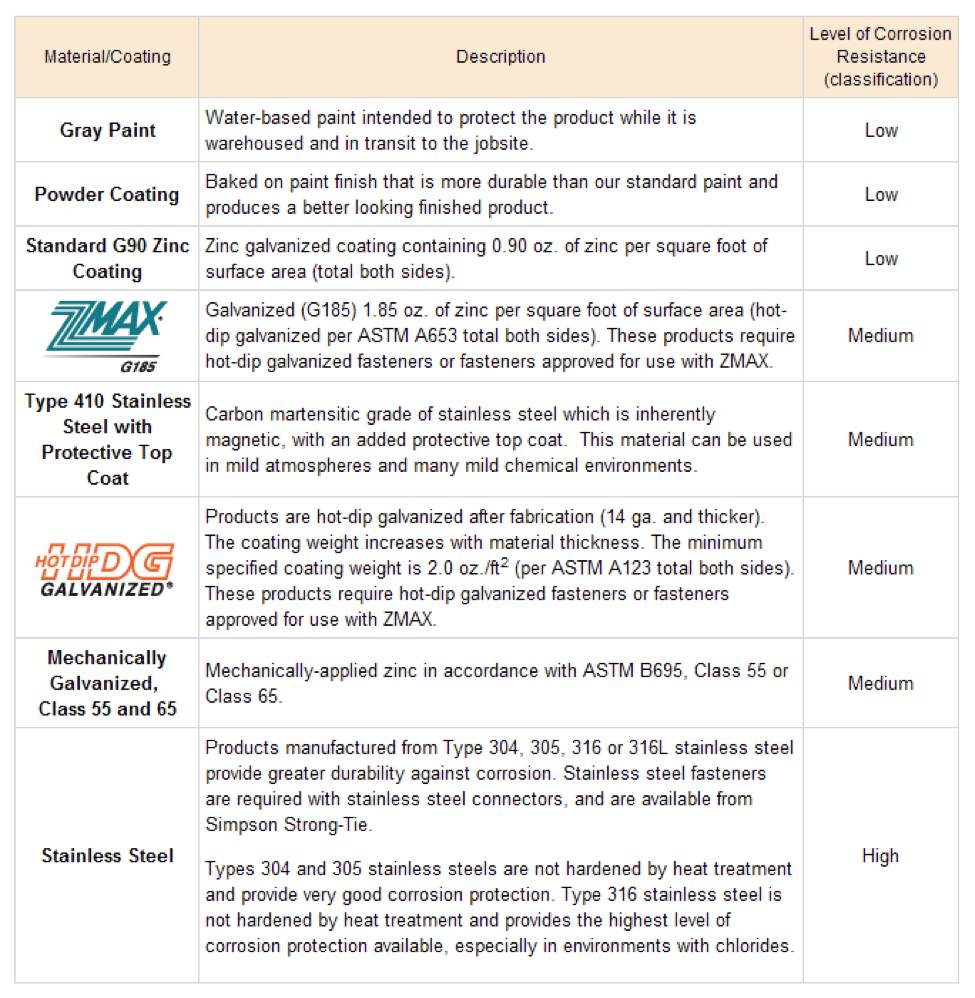
Unlike expansion anchors, screw anchors require the leading threads to cut into predrilled holes. This can be easily achieved with hardened carbon-steel cutting threads. Stainless steel is not hard enough to cut into concrete. The new innovative stainless-steel Titen HD solves the problem by brazing heat-treated carbon-steel cutting threads to the surface of the stainless-steel tips of the screw anchor. (See figure 4.) These carbon-steel threads are hard enough to cut grooves into the surface of a predrilled hole, allowing the anchor to be installed with ease. The volume of the carbon-steel cutting threads is less than 1% of the stainless steel, reducing the buildup of rust that eventually spalls the concrete edge. Other stainless-steel screw anchor manufacturers in the market have a bi-metal product that attaches a full carbon-steel tip. This bi-metal screw anchors contain up to 18% carbon steel. Such a large amount of carbon steel can expand up to six times its volume when it corrodes and can spall the concrete when used adjacent to an edge.
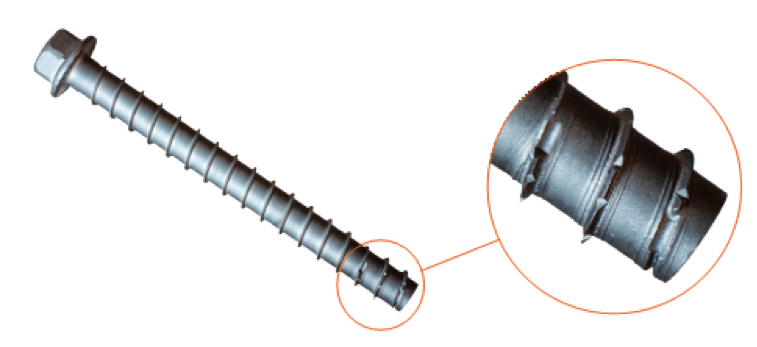

When designing an anchorage solution for your next job in a corrosive environment, the stainless-steel Titen HD will provide the best resistance for corrosion, and also give the ability to drive these anchors into the concrete with ease. More information about the product can be obtained by visiting strongtie.com/thdss.
- Corrosion Technology Laboratory (https://corrosion.ksc.nasa.gov/corr_fundamentals.htm).
- Galvanized Rebar (http://www.concreteconstruction.net/how-to/repair/galvanized-rebar_o).
Stainless-Steel Titen HD®
The Next Era of Stainless-Steel Screw Anchor For Concrete and Masonry.
